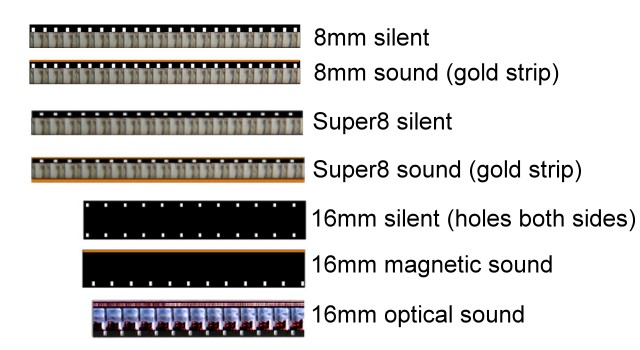How To Tell If Your Film Reels Have Sound
- May 24, 2019
- 3 min read
Updated: Mar 29
You may have a box full of old film reels that you would like to have converted to digital files. But how do you tell if any of these films have sound? We'll cover a few easy ways to identify if your movies have sound whether they are 8mm, Super 8 or 16mm film formats.
Regular 8mm film, also called Standard 8mm, was introduced by Eastman Kodak in 1932 as a home movie format alternative to the more expensive 16mm format. Regular 8mm film was not designed with the idea of having sound added to it. There were no Regular 8mm cameras that recorded sound during filming. However, it was possible to add a magnetic stripe to the Regular 8 film strip during processing and this stripe was glued to the edge where the sprockets holes were located. Called 'sound striping', this technique allowed Regular 8mm films to have narration or music that could be heard on projectors that could play this magnetic stripe. Some projectors also could record music or narration over the film but it was not a synchronized audio track. Regular 8mm films with sound are very rare. If you see a bronze colored stripe alongside your Regular 8mm film, then you have a sound track.
The Super 8 film format was designed with sound from the start and its introduction in 1965 provided a bigger frame to improve the picture and a section on the film to record sound. The sound track was located between the edge of the film and the image area. During the 1960's, the sound was added during film processing but cameras appeared in the 1970's that recorded the sound track during filming. Projectors were introduced that could play both magnetic sound films and optical sound film types. In the US, magnetic sound Super 8 films are the typical format and they have a bronze sound stripe that can be seen on the film.
While Regular 8mm and then Super 8 film became the popular formats for the consumer home movie market, 16mm film making was popular during World War II and then for government, education, medical and industrial clients in the 1950's and 1960's. Optical sound tracks were introduced in the 1930's and this is the most common type of sound technology used in the US for 16mm films. If you have a 16mm film with perforations on both sides of the film stock on every frame, then you have a silent 'double-perf' film. If you have a 16mm film with perforations on only one side, then you have a 'single-perf' film that will have an optical or magnetic soundtrack along the other side. Optical sound films are transparent while magnetic sound films look similar to silent 16mm film.
8mm, Super 8 and 16mm film stock gets brittle with age and the magnetic sound stripes degrade as well. For Regular 8mm films that have the sound striping glued to the film, these sound stripes tend to pull away from the film as the glue degrades. Whichever film format you have, it is important to digitize these films while they are still in good enough condition to generate a satisfactory video and audio transfer. If you have questions about the type of film or sound track you have, please reach out to us.









